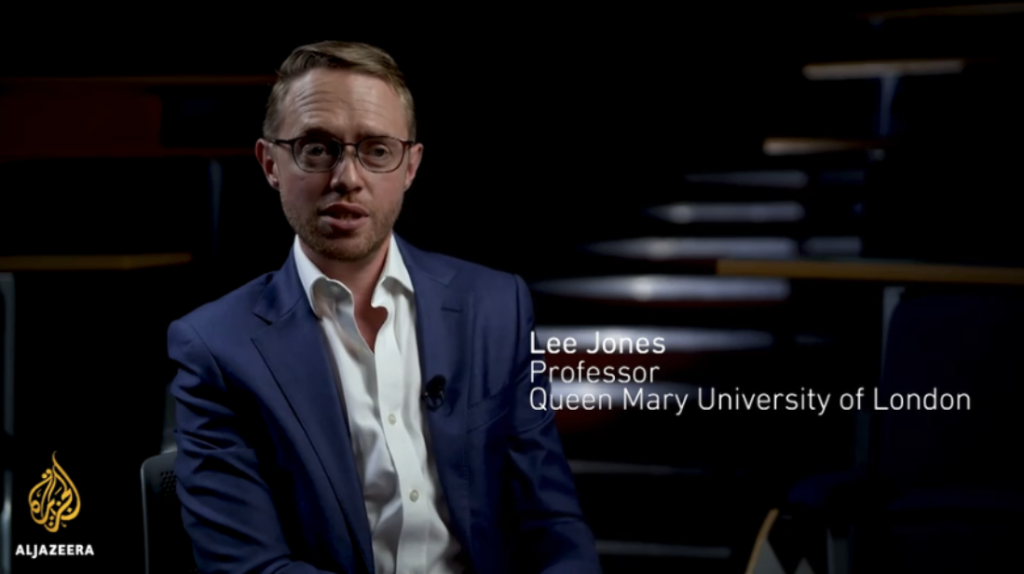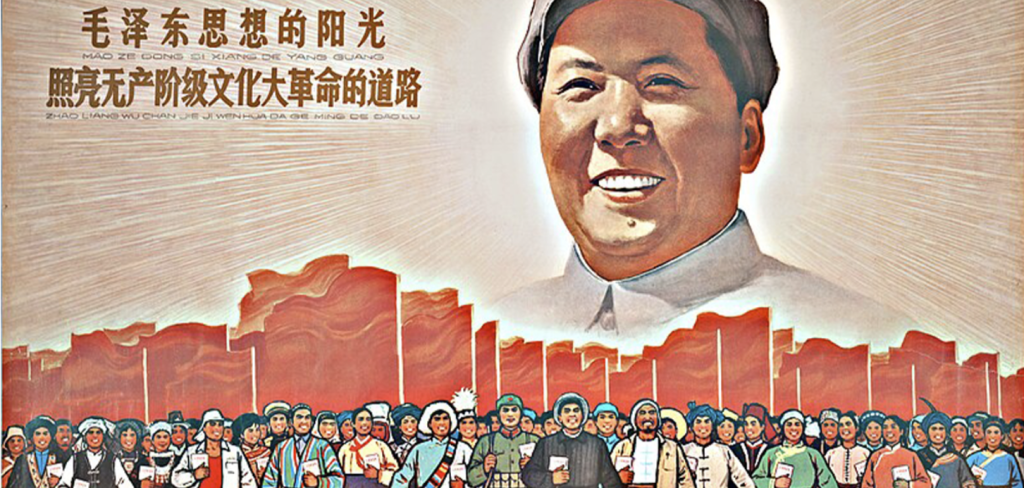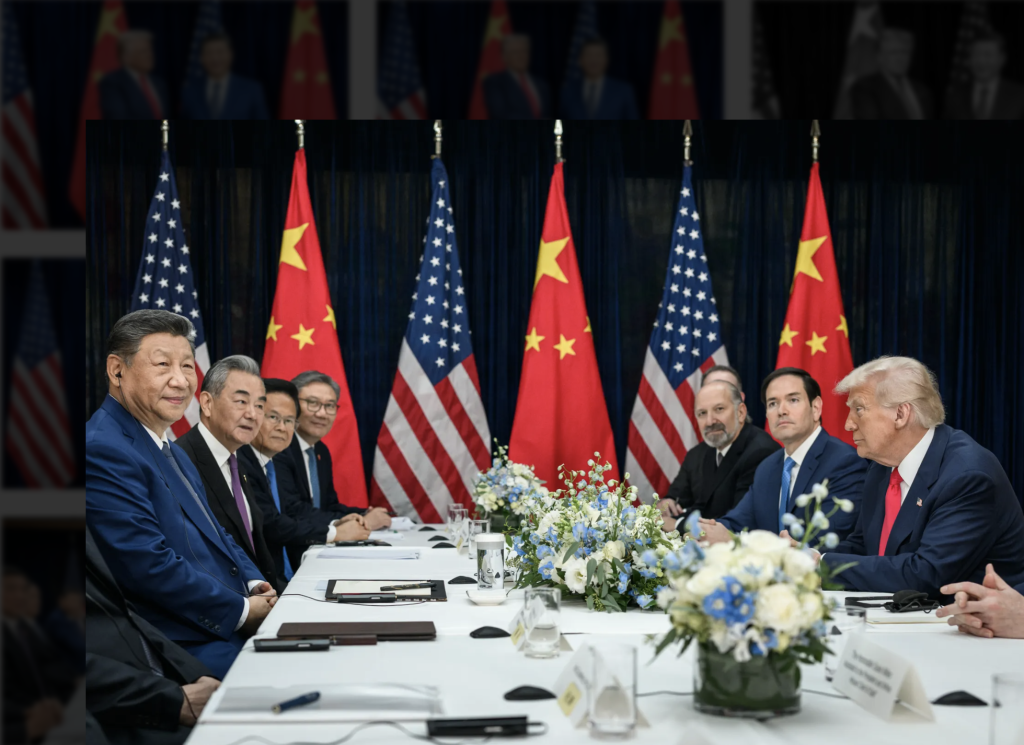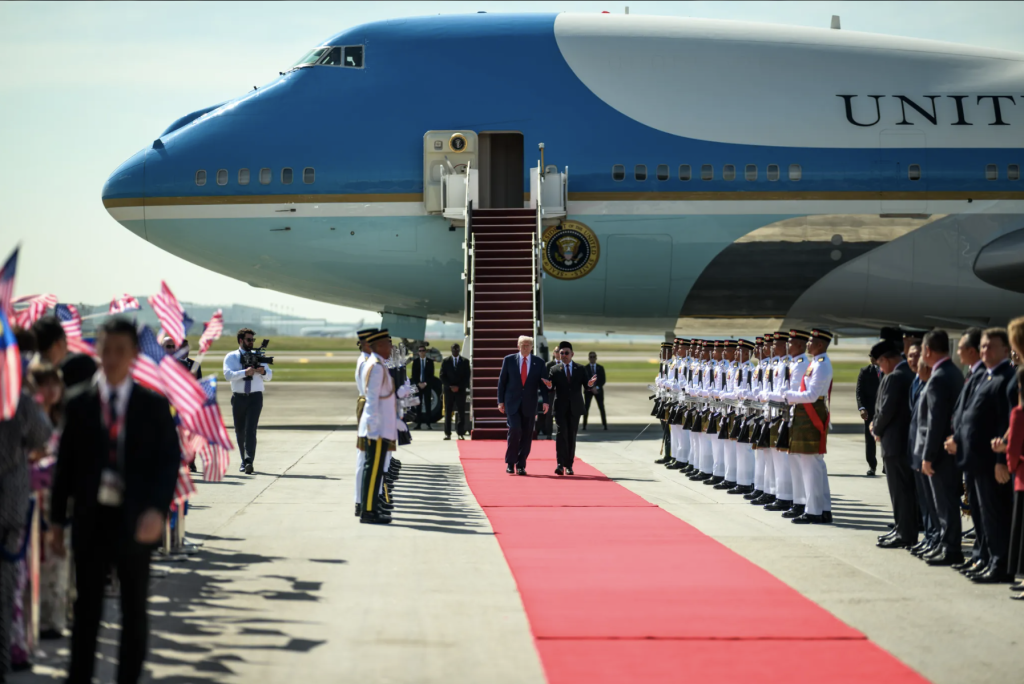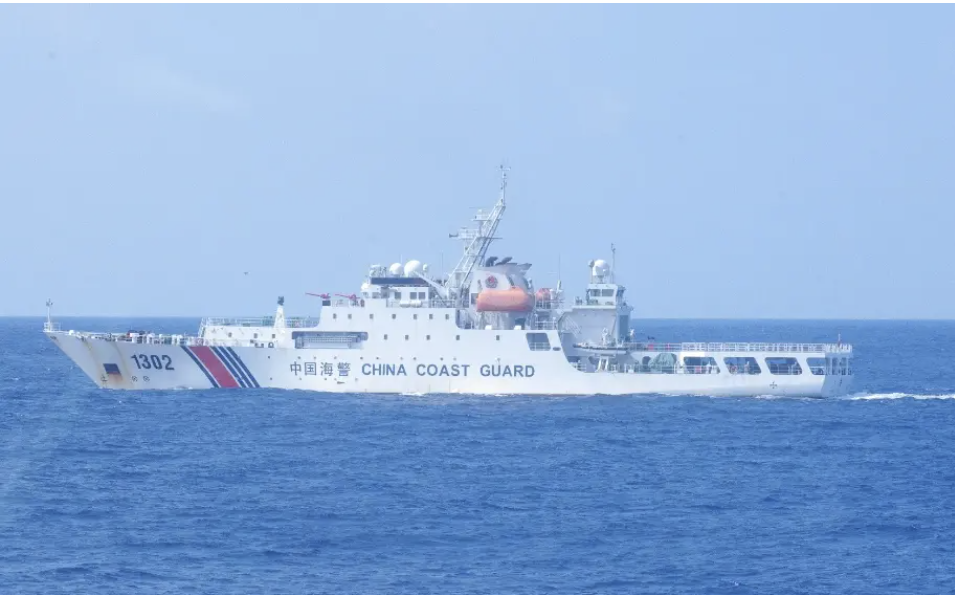Remembering Joseph Fewsmith: The Passing of a Generation of China Hands
History, Gender, and Ethnic Minorities in Chinese Film: An Interview with Cui Zhou
- Interviews
 Miranda Wilson
Miranda Wilson- 08/13/2024
- 0
In 2019, the Chinese science fiction film The Wandering Earth became one of China’s highest-grossing films of all time. Not only did it have success in the domestic market, it also became a popular and anticipated film throughout the world, including in the United States. Now available for streaming on Netflix, the success of The Wandering Earth begs the question: Are Chinese film companies ready to compete with Hollywood? For Cui Zhou, the answer is complicated, but she hopes Chinese film and films from all over the world become shared more broadly. Dr. Zhou delves into the rich history of Chinese film and the intersections of the filmmaking industry with politics, historical representations, and the state’s complicated relationship with ethnic minorities.
Cui Zhou is the Provost’s Postdoctoral Fellow in the Russian and East Asian Languages and Cultures Department at Emory University. She received her Ph.D. in modern Chinese literature and film from the Department of Asian Languages and Cultures at UCLA. She specializes in the study of the representation of Chinese ethnic minorities in films and popular culture and minorities’ participation in the film field. She is currently working on turning her dissertation “Cinematic Mappings of Chinese Ethnic Minorities: Discourse Dynamics in National and Translocal Film Production, Consumption, and Circulation, 1949-1999,” which explores the cinematic negotiations with ethnic minorities in China and the overseas Sinophone world, into a book project.
Miranda Wilson: To begin, what would you say are some of the main differences between Chinese and American films?
Cui Zhou: The answer is both simple and complicated. There are quite a lot of differences between the two types of films — that is why we distinguish the two as Chinese films and American films. Simply put, most Chinese films reflect Chinese culture and are deeply rooted in Chinese history, praising Chinese values. American films, of course, are about American culture, American values, and American history. Therefore, there are differences in the themes of the two types of films. Chinese films are usually about collectivism and Confucian values such as morality, filial piety, benevolence, and so on. American films focus more on discussions about individualism and freedom.
There are also some differences in genres. For example, in my film class, we talk about the wuxia genre, a popular martial arts genre. Wuxia films are deeply rooted in Chinese culture and Chinese history. In American films, the parallel to wuxia is the Western. These specific genres have a close relationship with the particular history, culture, and even geography of the country.
There are also differences in production modes. For example, in the high Socialist period, the Chinese film industry experienced a long period of nationalization. During this period, almost all filmmakers had to follow regulations set by the government, such as what kind of themes they could use, what kind of content they could include, and so on. Although China has experienced reforms, we can still see some of these traditions being maintained. There are still quite a lot of mainstream film productions in China propagating the political policies of the government. This kind of content is not common in American films. On this note, the function of films might not be completely the same. Chinese films typically highlight the educational function of film. As filmmakers make films, many of them aim to teach their audiences something, and the audiences want to learn something from Chinese films, perhaps some sort of lesson. This is not as common in American films.
However, we cannot ignore the fact that filmmakers sometimes blur the boundaries between American and Chinese films. For example, Ang Lee is a perfect example of this. He made Chinese films reflecting Chinese culture like Crouching Tiger, Hidden Dragon (2000). At the same time, however, he also made many films about American culture. Most notably, Brokeback Mountain (2005). He also has a film talking about the tension between American culture and Chinese culture called The Wedding Banquet (1993). This kind of film became more common as globalization and communication between the two countries occurred more frequently.
Overall, there are many differences between Chinese films and American films, but we cannot ignore that the boundaries are constantly being blurred.
MW: How is Chinese film used as a tool to represent Chinese history? How do films handle sensitive time periods, like the Cultural Revolution, for example, and what kinds of storytelling mechanisms do they employ?
CZ: Chinese film always takes responsibility for representing history; this happens in two ways. First, there is the production of historical dramas. These films treat history as the main content and theme. For example, we have quite a lot of films about the Opium War, which represents a kind of national humiliation in Chinese history. We have a 1950s version made by Zheng Junli and a 1990s version made by Xie Jin. And from these films, of course, audiences gain a degree of historical knowledge. They learn about the events of the Opium War and its overall impact. At the same time, even though these Opium War films are about the same historical event, there are a lot of differences in how they represent history. These differences provide us with a window to examine the contexts in which the films were made. That’s the second aspect I want to address. For instance, in the 1950s version, the director highlights the conflict between China and the West, which was an urgent issue for China in the 1950s. In the 1990s version, the film tries to underscore the necessity of transnational communication in order to deal with the West, which was an urgent issue for China at the time. Films, in this sense, record the living experience of people in a particular historical period. In my film course, we talked about Laborer’s Love (1922), made and set in the 1920s. Through that film, we can see how ordinary Chinese people reacted to the impact of modernity. Filmmakers use these films to record the present, and future audiences can use them to learn about the past.
As you mentioned, we have films that represent sensitive historical moments. There are many films representing the Cultural Revolution such as Hibiscus Town (1986), To Live (1994), Farewell My Concubine (1992), and so on. The filmmakers of these films are very brave. They depict very sensitive issues, such as the violence that occurred in political campaigns, the madness of the political leaders, and the physical and psychological pain of the victims. However, these filmmakers also had to use some narrative strategies to avoid possible political danger or challenging the authority too much. For example, most of these films spotlight individuals and highlight the powerlessness of individuals in chaotic periods instead of directly attacking or criticizing the government. That’s the key to avoiding political danger. Another way is to expand the context; they don’t just focus on the Cultural Revolution. For example, in Farewell My Concubine (1992), the story starts from the late Imperial Age, not the Cultural Revolution. Of course, it covers the Cultural Revolution, but that time period is only part of the film. This kind of strategy will appease the government because this film does not aim to solely attack this very sensitive historical moment. The film covers the general modern history. Although filmmakers did compromise, these films can hardly be exhibited publicly in Chinese theaters.
Another example of indirect methods is Wang Xiaoshuai’s film Red Amnesia (2014). The beginning of the film has nothing to do with the Cultural Revolution. It is about a retired widow who is struggling with a psychological issue. As the story unfolds, it is revealed that her psychological issue is deeply rooted in her experience during the Cultural Revolution. So, although the Cultural Revolution is not directly represented in the film, you can still see its shadow. In this type of film, filmmakers tend to rely on allusions, metaphors, or allegories to represent the sensitive topic.
Another strategy is for films to resonate with official discourse. After the Cultural Revolution, a lot of “Scar” literature emerged, some of which were adapted into films known as “Scar films.” These films depict the suffering caused by the Cultural Revolution and consistently portray the Gang of Four as the main culprits, which aligns with the official viewpoint.
The above-mentioned films appear in the 1980s and 1990s, during a period of economic reform. The government, in order to attract more outside investment, had to loosen its control over cultural production to some extent. If filmmakers could get investment from the outside, then they enjoyed a higher degree of freedom to depict what they wanted. They didn’t have to completely rely on the domestic market to circulate their films. This particular social context provided them with the opportunity to do some brave experiments and explorations.
MW: Hong Kong is a major hub for film production in China, but historically there have been political tensions between certain Hong Kong filmmakers and the CCP. What are your insights about filmmaking in Hong Kong as well as broader political tensions between the government and film industry?
CZ: The political tension between Hong Kong filmmakers and the government, and here, I mean not only the CCP government but also almost all the governments who once ruled this region, has always existed. It’s a challenge that Hong Kong filmmakers have always had to deal with. To some degree, it is determined by the specific geopolitical situation of Hong Kong. Hong Kong is on the border of the mainland; it connects with the outside world. It was once a colony controlled by foreign rulers. In history, the Nanjing government banned Cantonese films in the Republican period due to the factional competition inside the KMT and the special status of Canton. Hong Kong was the center of Cantonese film production. This policy of the government put a lot of pressure on the Hong Kong film industry. Local filmmakers had to find a way to survive in this context. Then, after the Chinese Civil War, the CCP became the ruling party in the mainland, and the KMT moved to Taiwan. However, the CCP did not take over Hong Kong immediately; Hong Kong remained a colony of Britain. This is what both the CCP and the West wanted: within the context of the Cold War, the CCP hoped Hong Kong would serve as a “window” to gain outside information, and the West also needed a “watchtower on China.”
This resulted in a complex culture in Hong Kong. In order to maintain stability in Hong Kong, the British government tried hard to keep the neutrality of Hong Kong, but it didn’t mean political competition did not exist. The CCP and the KMT competed with each other, and they had representatives in Hong Kong. So, the political competition between the two parties also put a lot of pressure on Hong Kong filmmakers. They were forced to be separated into two camps, the pro-CCP camp and the pro-KMT camp. The political competition between the two Parties forced the filmmakers in Hong Kong to choose a side.
However, the sensitive political situation also gave Hong Kong filmmakers some benefits. For example, in this period, Hong Kong opera films were very popular, but in Hong Kong, there weren’t many experts or professional opera performers. So, the CCP government sent experts to train and assist Hong Kong filmmakers. Additionally, the CCP government provided financial support for the pro-CCP filmmakers. On the KMT side, the KMT government opened the Taiwan market to pro-KMT filmmakers so they could shoot and circulate films in Taiwan. It was a very important economic incentive that attracted many Hong Kong filmmakers.
Despite the political pressure, Hong Kongers and Hong Kong filmmakers gradually found a way to survive. Instead of focusing on politics, they paid more attention to economic gains and entertainment. In film productions, many filmmakers were primarily driven by economic attractions and financial incentives. If you look at the reviews Hong Kongers posted in newspapers and magazines, you will find that many of them pay more attention to the entertainment aspect rather than the political or ideological aspect. Hong Kong films also began to gain an international reputation in this period. Hong Kong filmmakers began to explore the overseas market, especially the Southeast Asian market, and found ways to cooperate with other Asian countries such as Korea and Japan.
Changes in the mainland can always influence the Hong Kong film industry. For example, in the Reform Era, the mainland opened its doors to the outside world. Then, Hong Kong filmmakers began to return to the mainland to shoot films, cooperate with mainland filmmakers, or invest in film productions there.
After Hong Kong was handed over from the British back to the CCP, Hong Kong filmmakers had to deal with censorship and consider how to abide by the policies of the central government. On the other hand, they also gained some benefits. The central government would provide financial support, and the mainland presented a broader market compared to Hong Kong.
MW: One of the films you cover in your class is The Red Detachment of Women (1960) which features themes of gender equality. How has the representation of women in Chinese film changed over time? How are broader gender issues expressed or dealt with in film?
CZ: Chinese films were concerned with producing and circulating the expected ideal women in Chinese society. For example, in the Republican period, we have a film called New Women (1935) that depicts several different female images. They represent the expected women in different historical periods. Mrs. Wang is a traditional woman; although she gets a Western-oriented education, she still wants to be a dedicated wife. She’s not independent; her life heavily relies on her husband. Wei Ming, the female protagonist, is a modern girl who gets a Western-oriented education and challenges the patriarch of her home. She pursues free love and finds a job in society to support her family. She is the ideal new woman, expected by the May 4th elites. But in this film, she is not the perfect new woman. She’s too weak, and she’s not actually that independent. She still falls into the trap of the patriarchy and is ultimately controlled by that. This film also presents us with a third female image: Ah Ying, the working class. She is a female worker, and she’s quite different from Wei Ming and Mrs. Wang. She devotes herself to work and the working class. The interesting thing about this film is how it shows the power of this new woman. Filmmakers design a fight between her and a man. She stands up to Mr. Wang, and she is capable of fighting with this strong man. In this way, the filmmakers show her power, and her image is ultimately masculinized. Overall, she’s treated as the hope of Chinese women.
Turning to the high socialist period, the ideal socialist women were formed. That’s the female protagonist in The Red Detachment of Women (1960). She joins the army and becomes an active soldier. She even becomes a political leader. This is something we do not always see in previous films. The portrayal of this type of woman resonates with Mao Zedong’s rhetoric — “women hold up half the sky.”
On the one hand, this image shows us the optimistic perspective of new women or their lives during the socialist period. But does it mean gender equality? We have to put a question mark there because if we examine the characterization of the female protagonist in The Red Detachment of Women, we can see in order to achieve this political power, she has to sacrifice her feminine features in exchange for political power. In this film, she is overly masculinized. She has very short hair in the masculine military uniform once she joins the army and has to devote herself to revolution completely. This is the only way for her, and she does not have other choices. We must consider whether this is gender equality or not.
In the reform era, this type of socialist new women became outdated, and the ideal female image became the opposite. An example is the film Hibiscus Town (1986). In this film, we can see the socialist type of woman—the female cadre named Li Guoxiang. She has political ambition, she’s masculinized, and she always focuses on the revolution. But in the film, she is criticized by the filmmaker. Instead, filmmakers promote another type of female image: Hu Yuyin. She is a good wife and a good mother and represents the trait of loyalty.
Also in the reform era, we can find the appearance of female directors. Female directors also existed in the high socialist period, but in the reform era, female directors paid more attention to the female experience. They discuss the roles that women play in society, the difficulties that women encounter, and female consciousness. For example, Zhang Nuanxin’s Sacrificed Youth (1986) spotlights a girl and highlights her experience during the Cultural Revolution. However, women still faced problems of equal representation in Chinese films. For instance, the English title of a Huang Shuqin’s film is Woman Demon Human (1987). The Chinese title of this film is Ren Gui Qing, which literally means Human Demon Romance. In the Chinese title, the word woman, a keyword and an important component of the film, disappears. The Chinese title reveals the difficulties that Chinese women encounter: there is no room to highlight the female experience. In most of the films made in the reform era, you seldom see the expected resistance of women; rather, they always accept their traditional assigned roles of mother, wife, and loyal lover. But this is the very form of their resistance: They resist the representation of women in the high Socialist period.
It’s also in the reform era that we can find the appearance of films about LGBTQ people. For example, Zhang Yuan’s East Palace, West Palace (1996) and Stanley Kwan’s Lan Yu (2001). Those films expose audiences to the complexity of gender issues in China.
And recently, the global MeToo Movement has also influenced China and Chinese films. More Chinese audiences intentionally pay attention to the gender issues shown in Chinese films, especially the problematic depictions of women in films. Viewers post their reflections and criticisms on social media, which invites more people to join the discussion on gender issues. These online discussions also exposed more people to the concept of the male gaze and other aspects of gender discrimination.
In 2023, Zhang Yimou released his film Full River Red which contains a rape scene. In this scene, Zhang seemingly focuses on the pain of the female victim and her body. A lot of audiences questioned whether this depiction was necessary. This type of discussion is necessary in China right now. It led more people to understand the significance of gender and exposed some hidden gender issues.
MW: What do you see as the future of filmmaking in China? The 2019 science fiction film The Wandering Earth saw some success in the United States. Do you think Chinese film will begin to gain a more global audience?
CZ: That’s another good question. In terms of the intention of Chinese filmmakers, many of them have the ambition to push Chinese film into a broader market and expose more people to Chinese culture — expand the influence of Chinese films. But whether Chinese films could actually gain a more global audience depends on a lot of factors. The quality of films is the most important thing. Marketing also influences quite a lot. How can a Chinese film be effectively marketed to audiences with diverse backgrounds? That’s something Chinese filmmakers have to think about.
The Wandering Earth (2019) did a very good job. It, first of all, has a good story. The script is based on the story written by Liu Cixin. Before the film was shown globally, Liu Cixin’s science fiction stories had already been introduced in many countries. He gained a lot of global fans that became potential audiences for the film. Also, in terms of the technical aspect, the film’s special effects are pretty good, which can provide visual spectacles and attract more audiences. Science fiction is also a genre familiar to global audiences. Although the film shows some Chinese values like collectivism and the value of the home, the film also fits a narrative pattern most Western audiences are familiar with. Some students in my film course have said this film looks similar to American science fiction films.
To expand Chinese film globally, we also have to consider some other factors. For instance, the economic factor and whether Chinese films could actually be watched in countries outside China. The Chinese Wanda Group was once a majority shareholder in AMC theaters, and it provided Chinese films more opportunities to enter the U.S. and be watched by American audiences. But the Wanda Group sold most of its stake in AMC in 2021. Chinese filmmakers then have to think about how to rebuild this exhibition chain and distribution network to show their films to global audiences.
Another factor relates to government policies. While globalization has become very common, the global flow of films is not that free. The government’s policies determine how many foreign films are imported into a country. The relationship between China and the U.S. also may influence whether Chinese films can be shown in the U.S.
Ultimately, whether Chinese films will gain a more global audience is hard to predict. But personally, I hope we have more opportunities to consume films from different cultures and different countries.
MW: Your research focuses specifically on ethnic minorities in China. What are some examples of films that center around ethnic minorities, and how do they represent these groups?
CZ: The early appearance of ethnic minorities in films relates to national crises and political goals. For a very long time, China was viewed as a Han-centered country. So quite a lot of Chinese films are about Han culture, Han people, and Han stories. Then, as the nation was in danger, some Han filmmakers turned their attention to ethnic minorities. They hoped to encourage these ethnic minorities to join them in defending the nation. In the Republican period, there are several examples. One is Storm on the Border (1940) directed by Ying Yunwei. It depicts how the young Mongolian people are persuaded by the Han people to give up their ethnic hatred and join the Han to defend the nation.
The high Socialist period is the golden age of this theme. The popularity of this type of film during this time period relates to the needs of the government to promote the idea of China as a unified, multi-ethnic country. These films aimed to teach the Han Chinese how they should treat their minority fellows. At the same time, these films aimed to train minorities in their assigned roles for the new nation.
Almost all of these films discuss the brotherhood or national fraternity between Han and non-Han people. The Han should be the older brother who helps ethnic minorities, and minorities should be the younger brothers who respect the Han. Another important theme is to showcase how the CCP government provides help to minority communities in exchange for support from minorities.
During the high socialist period, most of the minority roles in these films were played by Han actors and actresses. These films were also directed by Han filmmakers. It relates to the intention of the government. The government wanted to build a porous ethnic boundary. Therefore, the people were encouraged to transcend this ethnic boundary and join the unified national family. But at the same time, the government also intentionally trained some professional minority filmmakers, especially actors and actresses. In this period, we see the appearance of some minority stars. An example is the actress Yang Likun, a Yi actress. She gained her stardom because of her talented performance in Five Golden Flowers (1959). In this film, she plays a Bai girl. Although she is a minority actress, she still participated in the cross-ethnic performance.
In these minority-themed films, it was even permissible to ignore some taboos. For example, in the high socialist period, the theme of love was very sensitive. If you were to tell a Han story and engage with the theme of love, it would not be okay. It would be very politically dangerous. However, most ethnic minority films made in this period engage with the theme of love. These films, to some degree, imply that ethnic minorities could be the exception in the context of the high socialist period. However, this kind of portrayal also placed the minorities in a less progressive position than the Han because, in the context of the high socialist period, individuals were required to know that they should devote themselves to revolution and political campaigns rather than romantic affairs.
In this context, these films also perpetuated and circulated many stereotypes. Now there are still many Chinese people who think ethnic minorities only focus on romantic affairs, singing, and dancing. Or that their way of life is “backward” and marked by poverty. These ideas, to some degree, relate to the ethnic minority films made in the high socialist period.
In the reform period, some of the socialist traditions are maintained. Themes like the national fraternity and brotherhood between Han and non-Han prevail. There are also new themes, such as religion and discussions about the relationship between minority culture and environmental protection. We also see the appearance of ethnic minority directors. They try to show or represent their own native culture and ethnic values, like the Tibetan director, Pema Tseden. His film Tharlo (2015) depicts the impact of modernity on the Tibetan community. There is also a Korean-Chinese director Zhang Lu. His film Dooman River (2009) shows the tension between Korean-Chinese, North Korean defectors, and South Korea. These are perspectives we cannot access in the ethnic minority films made by Han directors.
MW: Any Chinese film recommendations for our readers?
CZ: Oh, there are quite a lot. I will say, don’t forget about the older films. Old films tell us about the evolution of Chinese films and Chinese filmmakers always treat old films as their inspiration. If there are any fans of martial arts films, they cannot ignore director King Hu. He made a very influential wuxia film called Dragon Inn (1967). Later, the Hong Kong filmmakers remade it to show their respect for King Hu, New Dragon Gate Inn (1992). Taiwan-based director Tsai Ming-liang’s Goodbye, Dragon Inn (2003) also relates to King Hu’s legacy, although it is not a wuxia film.
If you are interested in old Chinese films, you could watch Spring in a Small Town (1948) directed by Fei Mu. Third Sister Liu (1960) was quite popular in both China and overseas Chinese communities. You can also watch avant-garde films made by the fifth generation, such as Red Sorghum (1987) and Yellow Earth (1984). Jia Zhangke’s Hometown Trilogy is also good. Other films I’d recommend include City of Sadness (1989), made by Hou Hsiao-Hsien, or some Hong Kong films like Chungking Express (1994) or Happy Together (1997).
There are some recent films that are also very interesting, such as The Pig, the Snake and the Pigeon (2023). Or the comedy Marry My Dead Body (2022).
Miranda Wilson is a senior at Emory University and contributing editor for the U.S.-China Perception Monitor.
The views expressed in this article represent those of the author(s) and not those of The Carter Center.


